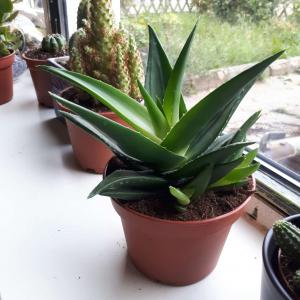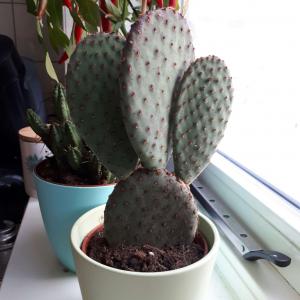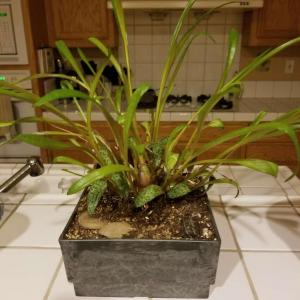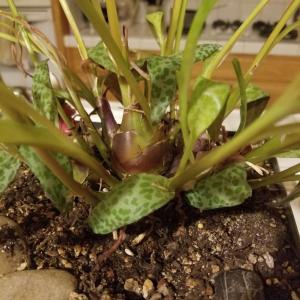文章
Dummer. ゛☀
2017年08月13日

I received a Kalanchoe as a gift plant this summer and I am now struggling to get it to bloom anew. Kalanchoe is an African native that has become a common house guest in North American homes. These plants require low light conditions to force budding. Ideally, the plant should experience 14 hours of lightless conditions to promote budding and bloom. Getting Kalanchoe to bloom again requires a bit of a rest period for the plant, correct lighting and some good fertilizer to fuel the process. A few tips on how to make a Kalanchoe rebloom will ensure success and a beautiful flowering houseplant in winter. 
Kalanchoe Bloom Time
Usually, the plant is in full bloom at purchase and produces a constant parade of flowers for weeks or even months. Kalanchoes are forced to bloom by nurseries, in order to present their flowers for purchasers. When does Kalanchoe bloom naturally? In its native region, Kalanchoe can bloom almost year around, but as a container houseplant, it is most commonly blooming in late winter to late spring. This cycle will slow down as lighting increases.
Getting a Kalanchoe to bloom again requires a rest period for the plant and then tricking it into thinking it is a different time of year. Exposure to lower light levels during fall and winter will generally encourage the plant to bloom, but plants in higher light regions will need some closet time to mimic the lower light hours of a winter hibernation. A hibernation, or rest period, is necessary for the plant to amass energy for blooming and growth when conditions are favorable. Keeping the plant in no light for this period will awaken the plant from its winter slumber and cause flower production. Failing to provide a rest period is often the reason getting Kalanchoe to bloom again may be unsuccessful.
How to Make a Kalanchoe Rebloom
After the flowers on your plant begin to fade and die, cut them back and remove the spent blooms. This prevents the plant from directing energy to trying to sustain a part that is already spent. During the summer, keep the plant in well-drained soil in a sunny location and maintain a moderate moisture level. When fall arrives, cut back on water and move the plant indoors if you are in a zone below USDA 9 or where frost is expected. The plant will experience low light conditions from fall to late winter, which normally causes flowers to form. Fertilize with a 0-10-10 in late winter or just as the first buds are forming. This will promote better and more Kalanchoe flowering and enhance plant health and vigor.
Tricking a Kalanchoe into Blooming
If you want your plant to bloom at a specific time, such as Christmas, you will need to do some planning. Minimize watering and give the plant a 14-hour period without light daily 6 weeks before the desired bloom time. Place the plant in a closet or under a box for 14 hours and provide 10 hours of bright light. Keep the plant warm and away from drafts. Do not water or feed the plant for 6 weeks, as it is dormant. As soon as you see flower buds, move the plant to brighter lighting and resume watering. Feed the plant in spring and remove spent flowers to encourage new buds. These plants are easy to grow and provide up to 6 months of beautiful little flowers and thick attractively scalloped leaves.

Kalanchoe Bloom Time
Usually, the plant is in full bloom at purchase and produces a constant parade of flowers for weeks or even months. Kalanchoes are forced to bloom by nurseries, in order to present their flowers for purchasers. When does Kalanchoe bloom naturally? In its native region, Kalanchoe can bloom almost year around, but as a container houseplant, it is most commonly blooming in late winter to late spring. This cycle will slow down as lighting increases.
Getting a Kalanchoe to bloom again requires a rest period for the plant and then tricking it into thinking it is a different time of year. Exposure to lower light levels during fall and winter will generally encourage the plant to bloom, but plants in higher light regions will need some closet time to mimic the lower light hours of a winter hibernation. A hibernation, or rest period, is necessary for the plant to amass energy for blooming and growth when conditions are favorable. Keeping the plant in no light for this period will awaken the plant from its winter slumber and cause flower production. Failing to provide a rest period is often the reason getting Kalanchoe to bloom again may be unsuccessful.

How to Make a Kalanchoe Rebloom
After the flowers on your plant begin to fade and die, cut them back and remove the spent blooms. This prevents the plant from directing energy to trying to sustain a part that is already spent. During the summer, keep the plant in well-drained soil in a sunny location and maintain a moderate moisture level. When fall arrives, cut back on water and move the plant indoors if you are in a zone below USDA 9 or where frost is expected. The plant will experience low light conditions from fall to late winter, which normally causes flowers to form. Fertilize with a 0-10-10 in late winter or just as the first buds are forming. This will promote better and more Kalanchoe flowering and enhance plant health and vigor.

Tricking a Kalanchoe into Blooming
If you want your plant to bloom at a specific time, such as Christmas, you will need to do some planning. Minimize watering and give the plant a 14-hour period without light daily 6 weeks before the desired bloom time. Place the plant in a closet or under a box for 14 hours and provide 10 hours of bright light. Keep the plant warm and away from drafts. Do not water or feed the plant for 6 weeks, as it is dormant. As soon as you see flower buds, move the plant to brighter lighting and resume watering. Feed the plant in spring and remove spent flowers to encourage new buds. These plants are easy to grow and provide up to 6 months of beautiful little flowers and thick attractively scalloped leaves.
1
3
求助
succulentnewbie
2017年08月12日

Can anyone help me ID the first 4? Also if someone knows what's wrong with the last two, it would help me out a lot! Last one is a crassula sub species
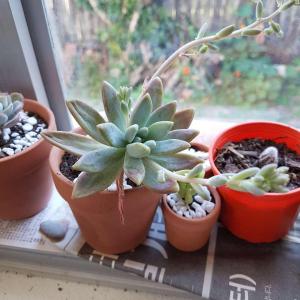
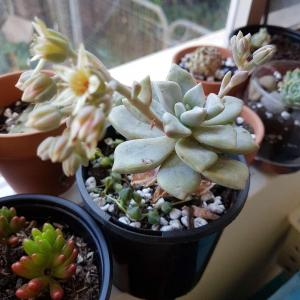
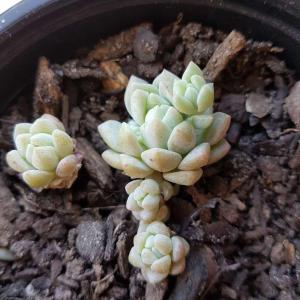







1
0
fearlessgrower:i agree, flapjack needs water
meriunkat:the first one is Graptosedum Francesco Baldi
Haleyfleeanne:Last two, looks like they need water.
求助
PuppyMintMocha
2017年07月06日

Can anyone ID any of these?
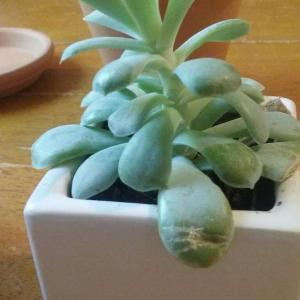
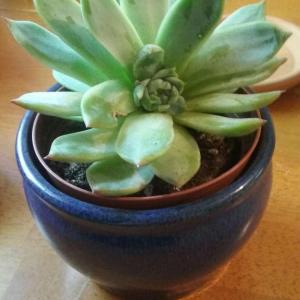




0
0
sarajordan2993:the second one is some type of Echeveria - im not sure of the exact type



